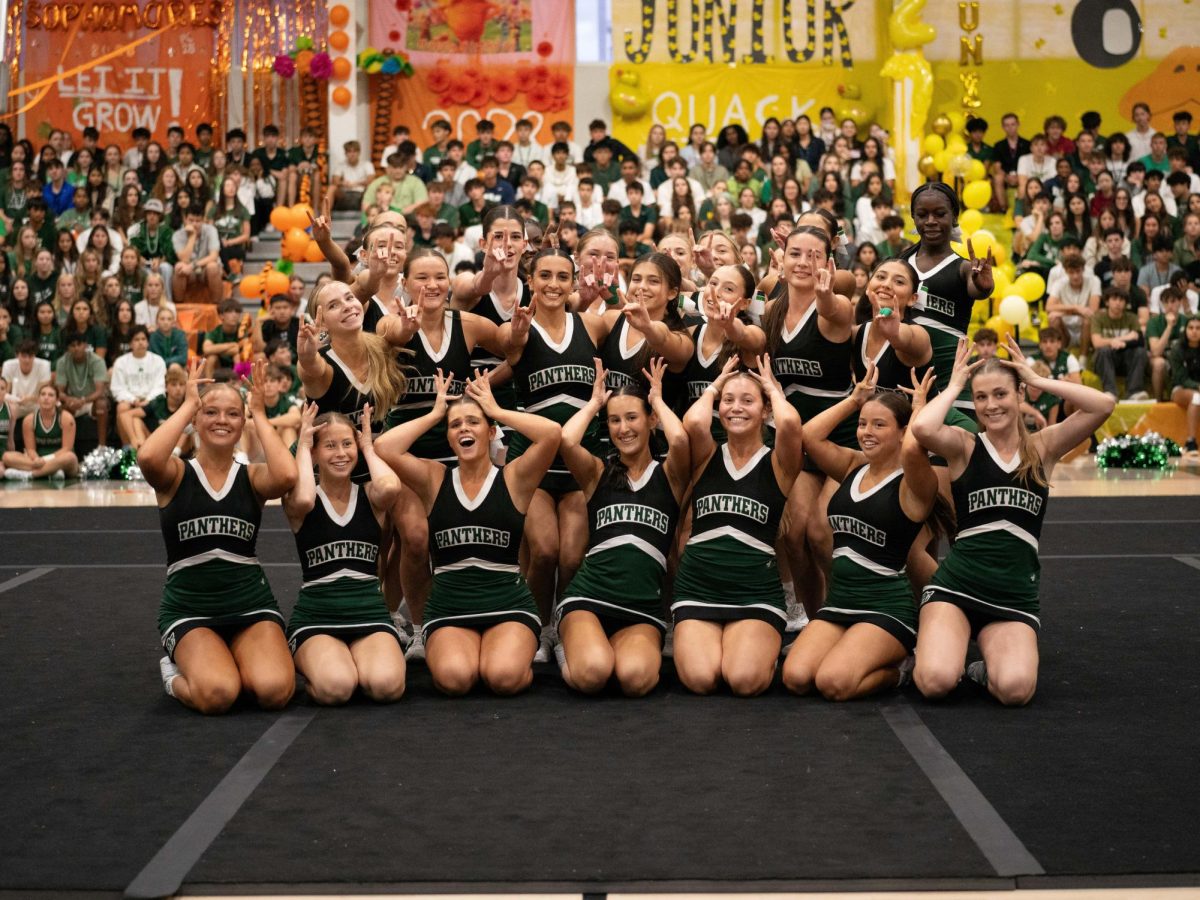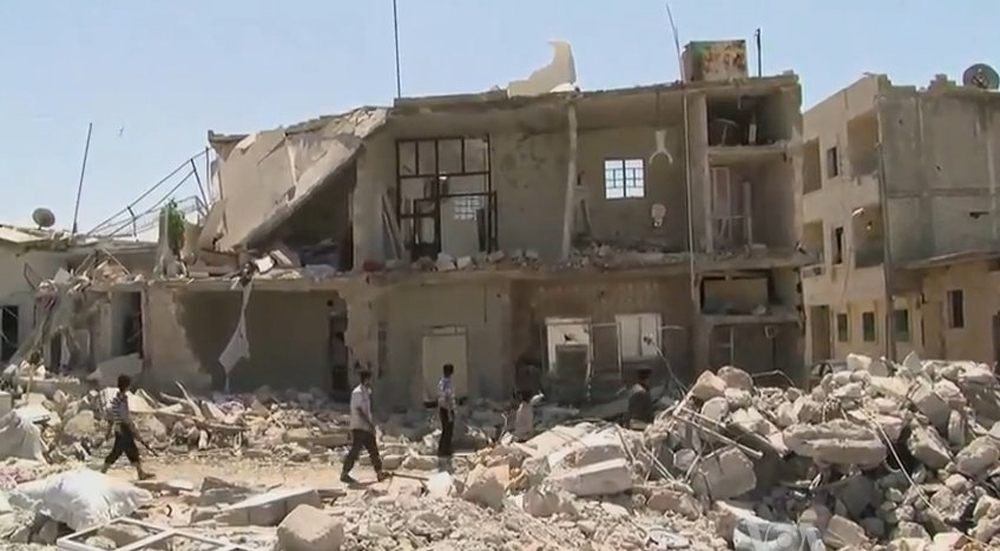[ot-caption title=”The destruction from the Syrian Civil War has been widespread and is growing. (Scott Bob, VOA and Wikimedia [Public Domain])”]
The Syrian crisis occurring today may stem from past regional issues. The first of these disputes was the Arab Spring, beginning in late 2010/early 2011 with protests in the state of Tunisia. This mentality of protests spread across other Arab countries that resulted in major conflicts in Iraq, Libya, Yemen, Bahrain, Egypt, and Syria. Most of these conflicts blew over or resulted in a regime change in the government within a year, but the conflict in Syria is still currently ongoing. [spacer height=”20px”]
Syria’s crisis began when a group of teenage boys were arrested and brutally beaten in March 2011 after writing graffiti on a school wall in support of the Arab Spring revolutions. This incident worked as a catalyst to encourage more pro-democracy supporters to demand President Assad, the current president of Syria, step down from his position. President Assad quickly responded to these demonstrations by using force to quell them. This use of force only caused more backlash, which prompted even more protests, with hundreds of thousands in the streets by July 2011. Eventually, members of Assad’s military left their positions and started a rebel force called the Free Syrian Army. The Free Syrian Army’s goal was to overthrow the government, essentially starting the civil war. [spacer height=”20px”]
Religious sectarian splits have contributed to fighting on both sides. For the most part, minority religious groups, like the Shia, support the Assad regime today. Most of the opposition groups are composed of Sunni Muslims, the dominant religious group in Syria, of which the Assad family is not a part of. The Assads are a part of the Alawite sect. [spacer height=”20px”]
In the beginning, the main groups fighting were just the FSA and the Assad regime. However, overtime more rebel groups branched off who would fight the government, but they would also be fighting each other for power. The nearby Kurds also saw this civil war as an opportunity to grab land and power so they subsequently joined the fighting. In 2014, after they became a major presence in Iraq, the terrorist group ISIS began to take land from Syria. ISIS’s goal is to accumulate land and recruit supporters. All those who do not believe in the extremist beliefs of ISIS are enemies to them. ISIS is a problem for both the rebels and the Assad regime and both groups must fight ISIS in addition to everybody else. [spacer height=”20px”]
Neighboring countries have joined the fight in Syria, too. Iran, Iraq, and Lebanon support Assad whereas Turkey, Qatar, and Saudi Arabia do not. These countries have offered military and financial support for their respective sides and their close proximity to Syria influences the amount of support they can offer. In August of 2016, Turkey launched an operation called “Euphrates Shield.” Turkey devised this military intervention in an attempt to secure their own country, which borders Syria, from ISIS and the Kurdistan Worker’s Party terrorist organization. Turkey has teamed up with the FSA and other rebel groups to accomplish their mission. Countries from further away, such as Russia and western states like the United States and Britain, have contributed to the civil war in a variety of ways. Russia has stepped in on the side of the Syrian government and has sent military resources to aid members of the Syrian army. Additionally, they have started a bombing campaign against ISIS and some rebel groups that are backed by the United States. There has been some backlash against the bombings because many have killed civilians, including children. [spacer height=”20px”]
Originally, the United States’ main goal was to contribute humanitarian aid to displaced Syrians. Their aid and social programs were an attempt to help those fleeing from the conflict. Overtime, the United States became more involved. When ISIS joined the conflict, the United States, Britain, and other members of the UN started a coalition to launch targeted air strikes against ISIS. While these strikes are aimed at ISIS, the coalition has avoided strikes because they perceive those may help Assad. The United States then started a program to train Syrian rebels. The objective of the program was to find and recruit Syrian refugees from the field and train them at United States bases. After spending $500 million in this program, it was discovered that only 60 fighters had been trained. After this disclosure of information, the program was cancelled in 2015. Instead, the United States government decided on a plan which would target the leaders of vetted rebel groups and give them the training they needed to have a chance in the fight. Today, approximately 300 United States special forces members are in Syria to train and aid rebel groups and fleeing civilians. [spacer height=”20px”]
One of the most notorious battles in the civil war occurred in Aleppo. This ongoing struggle for control of the city lasted for five years. In December 2016, the capital, Aleppo, officially fell back into the hands of the Syrian regime. The rebels had been holding on to a piece of the eastern part of the city for a while, but could not compete with the Syrian government. After five years of fighting in the capital, Aleppo is destroyed and barely habitable. [spacer height=”20px”]
The worst of the fighting going on in Syria today is in the Northern part of the country. Currently, fighting is centered around the city of al-Bab since a takedown of al-Bab would cut off major routes for ISIS compounds located in the eastern part of the country. ISIS is now in control of al-Bab, but they are surrounded by the Syrian army from the South and rebels with the support of Turkey from the north. Turkish and Syrian forces have yet to fight head to head, but this could change if they both advance on al-Bab. [spacer height=”20px”]
As of December 2016, 4,837,248 Syrians have been forced to flee Syria due to the civil war. An additional 6 million have been displaced from their homes but remain within the country. Neighboring countries, such as Turkey, Lebanon, and Iraq are overflowing from refugees and are running out of space for them. Leading the way in harboring refugees is Turkey. Turkey has accepted approximately 2-3 million Syrian refugees, with most living in camps. The cramped and crowded conditions in the camps has prompted some refugees to make the dangerous trip to Europe, in hopes of a better life. On the journey to Europe, many refugees pass through Greece, but few stay there. Germany’s open door policy has accepted over 300,000 refugees from Syria, one of the most from a European country. Some Latin American and North American countries have also offered permits for incoming refugees. Compared to European and neighboring countries, the United States is significantly lacking behind in the amount of refugees it has accepted. In 2016, the United States allowed 10,000 refugees to enter and they must first pass two years of strict screening to be accepted. In 2017, President Donald Trump signed an executive order that prohibits Syrian refugees from entering the country for four months. [spacer height=”20px”]
The end of the Syrian crisis is not in sight. The humanitarian and refugee problem continues to increase as countries fill up and other countries prohibit the entrance of refugees. The tensions between the Assad forces, rebel forces, and ISIS forces have also not decreased. Solutions to this problem include stronger international action and internal diplomacy to deescalate tensions. Additionally, an international coalition to take down ISIS may contribute to lessening of tension and hopefully will be more successful in the future. Once the civil war is over, the regime change or maintenance of the current regime will most likely be met with protests from the opposite side. Syrians and people worldwide hope that some resolution will be found to end the war in the near future. [spacer height=”20px”]
Photo Link: https://commons.wikimedia.org/wiki/File:Azaz_Syria_during_the_Syrian_Civil_War_Missing_front_of_House.jpg
Sources: NPR, New York Times, CNN, AlJazeera, BBC, Independent, IBT Times, Politifact, LA Times
































![Stranger Things 4: What to Expect [Warning: Contains Spoilers]](https://pcpawprint.com/wp-content/uploads/2021/11/StrangerThings4-900x473.jpeg)
























































